QuestionHi,
I bought my tank last weekend and set it up. I left it for a week and then bought my fish yesterday. I got 4 orandas (i think) and one of them has a 'black' eye. The whole of it's eye is black ang the other is normal. Do you have any idea why? It was like that when i looked at them in the car on the way home so i dont think it is anything to do with my tank but am not sure, any advice would be really helpful.
Thanx.
AnswerHi Amy;
If is probably just his natural coloration. Goldfish change color gradually over most of their lives. As long as the eye is not abnormal other than pigment it is probably fine.
I am concerned though that so many fish are being added to a new tank. Especially a goldfish tank. You should have no more than one inch of fish for every ten gallons when first starting out with any kind of fish. So if you have 4 goldfish and they are all about an inch long right now, you should have at least a 40 gallon tank. They will be the maximum population even after the break-in too because goldfish grow to 6 or 8 inches.
Goldfish are very messy guys that need a minimum of 10 gallons per fish. Many have been kept in tiny tanks or bowls for a few weeks or months but they eventually die a very tortured and poisoned death. Poor fellas. It's a common mistake but it is sadly at the expense of little fishy lives. So, I hope it's a big tank. They will do great if you do.
Here is my article on new tanks to help you understand the whole break-in process;
**********
New Tank Syndrome or Break-in Period
So you have a new tank and you filled it up, put the filter together, mounted the heater into place and turned on the lights. You have all the plants and decorations where you want them....
You are ready for fish.
But, your filter is not ready for a full tank of fish yet.
The filter is running and moving the water and cleaning out crud, right? Of course!
But a very important part of your filter is the part you can't see. An aquarium filter removes the larger visible stuff, but it also must remove the dissolved fish waste that turns into ammonia in the water. To do this, special bacteria must grow in the filter system and on the particles of gravel in the bottom of your tank. This process occurs even on a limited scale in little fish bowls that have no filter in them.
This is "New-Tank Syndrome" or the "Break-in Period". The entire process takes 6 to 8 weeks to complete because these "nitrifying" bacteria grow quite slowly.
Start off with only one or two hardy fish (no more than 2 total inches of fish) for every ten gallons of water and don't add more until the 6 to 8 weeks has gone by. Hard to be patient, but it is worth it to keep your fish alive and healthy. As a matter of fact, the bacteria cannot develop without fish in the tank. You can let that tank sit forever without fish in it, but as soon as the first fish goes in the process begins. Avoid changing the filter pads during break-in. This removes the bacterial colonies that are essential to a balanced aquarium. You can rinse the filter pad out in a container of aquarium water. This will preserve most of the bacteria colonies while still allowing your filter to flow freely. Even using bacteria additives and water conditioners when you first set up the tank will not make a tank begin the cycle by itself. If there are no fish to provide food (fish waste) for the bacteria, the beneficial bacteria cultures will die and you will have to start the colonies all over again once fish are added to the tank. Once the tank has completed the initial cycle, you can change the filter pads every 4 weeks or so. But for now, just rinse them.
Feed your new fish VERY lightly. Any excess food will cause additional waste your system cannot afford to have right now. If you see food floating around or lying on the plants and gravel after five minutes, too much food is going into the tank. Cut back a little each time you feed until it is ALL gone 5 minutes after you feed them. Feed them once a day.
During this "break-in period" your tank will become cloudy and milky looking. You may have to tolerate this for the entire break-in period but it is only temporary. Changing 25% of the water three times a week until the break-in period is over helps a great deal. Changing water reduces the ammonia and nitrites that rise while the bacteria continues to multiply. If ammonia and/or nitrites become too high, your fish will become stressed and possibly die. Use a good water conditioner when you replace the water and make sure it is the right temperature to avoid shocking your fish.
When the break-in is over after 6 to 8 weeks and there are no nitrites or ammonia present in the water you can slowly add more fish. Add one or two every week until you reach the desired population. This allows the bacteria to adjust to the new population every time before adding more. Monitor the nitrites and ammonia to be sure they don't come up. If they do, make a 25% water change and check them again. Don't add the next fish until the levels are down again.
The safe maximum population for any size tank is one inch of adult fish for every gallon of water in the tank. Do some research to be sure of the fish you are interested in. Even though they are small when you buy them, you have to base your population calculations on full-sized adult fish. Many hobbyists have up to two inches per gallon but this can be risky. If a water quality issue arises or a disease occurs it will spread fast and furious in an over-populated tank. In any case, 25% water changes every week to two weeks are absolutely essential for the health of your fish.
Following these guidelines will help you get your new tank on the right track.
**********
At Your Service;
Chris Robbins
Come on over and join us on the freshwater fish forum at About.com to get even more information too;
http://freshaquarium.about.com/od/questionsanswers/a/naavigateforum.htm

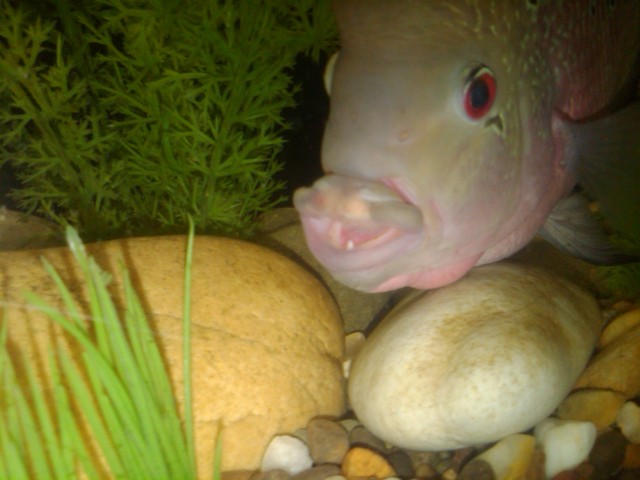 Sick Flowerhorn
Question
Swollen Lips
I have a beautiful Flowerhorn whi
Sick Flowerhorn
Question
Swollen Lips
I have a beautiful Flowerhorn whi
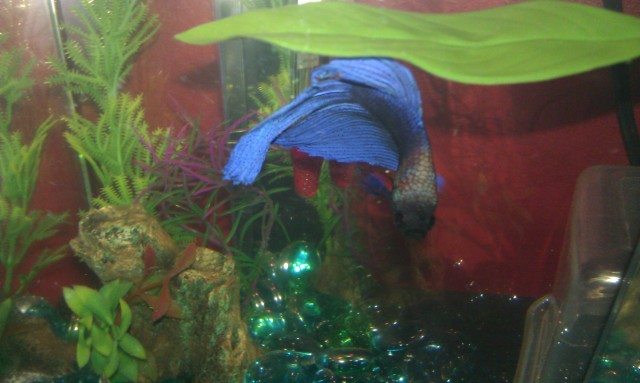 Sick Betta?
QuestionQUESTION: Ive had my Betta for close to 3 month
Sick Betta?
QuestionQUESTION: Ive had my Betta for close to 3 month
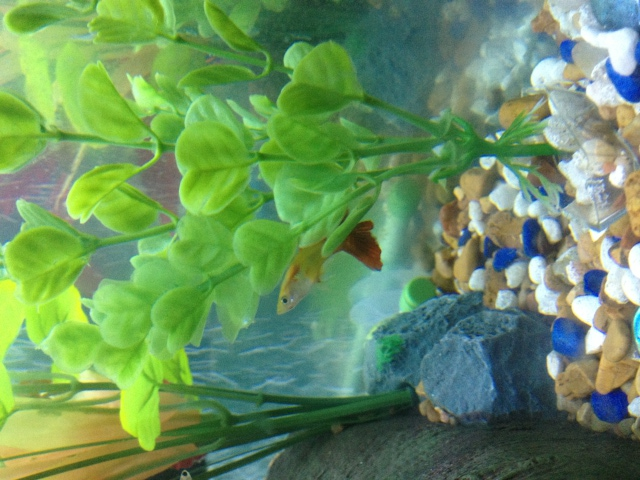 Guppy behavior
QuestionSunburst
Sunburst
QUESTION: One o
Guppy behavior
QuestionSunburst
Sunburst
QUESTION: One o
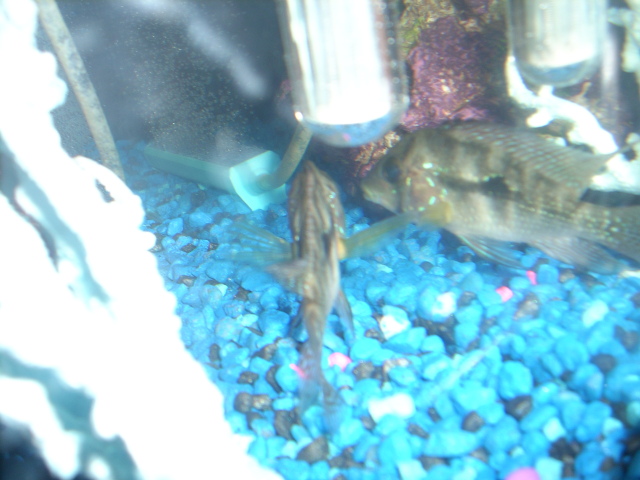 my south american cichlid
Questionmale Cichlid
QUESTION: Hi there I really
my south american cichlid
Questionmale Cichlid
QUESTION: Hi there I really
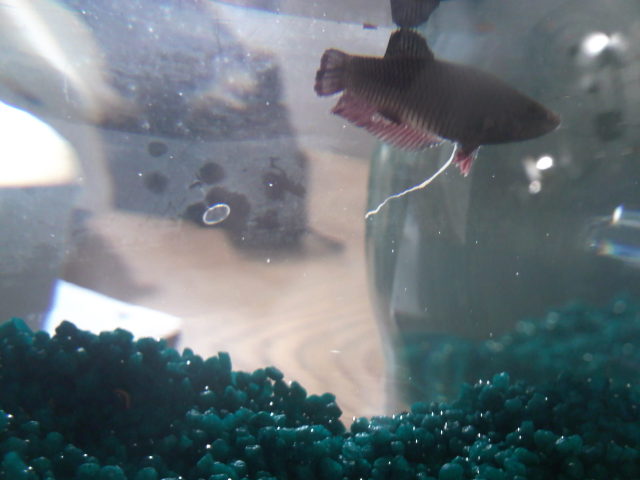 My betta has a white tube hanging,is it sick?
Question
Hanging White tube
Last week I bought a femal
My betta has a white tube hanging,is it sick?
Question
Hanging White tube
Last week I bought a femal